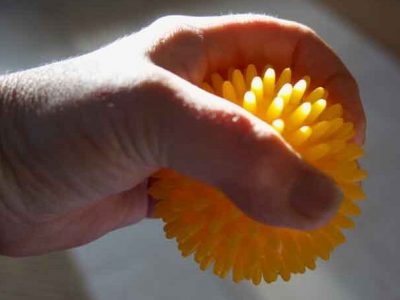The wrist is the complex joint where the bones of the forearm meet the bones of the hand (the forearm bones are the ulna on the little finger side and radius on the thumb side)
A Colles fracture
(distal radius fracture or transverse wrist fracture) is sustained when a fall occurs onto an outstretched hand sufficient to break/fracture the radius close to the wrist. Often the radius bone is displaced upwards (posteriorly) and the patient presents with an obvious deformity of the wrist commonly called a dinner fork deformity. This is an extra articular injury which means it does not involve the articular surfaces of the wrist joint.
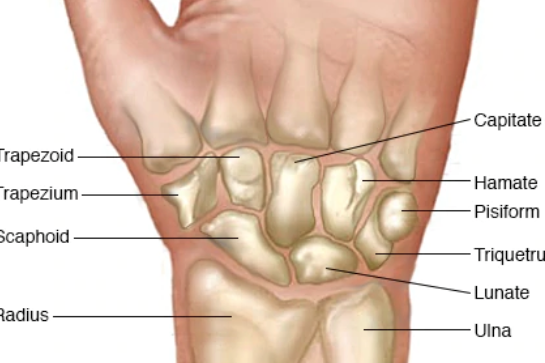
Symptoms
Pain
Lack of grip
Swelling in the area of your wrist
Tingling and numbness sometimes but not always
Bruising.
Shock with a feeling of nausea and faintness
This is a common fracture and 15% of the population will at some point in their lives have this injury. It is most common in elderly women and especially those with osteoporosis. Older males presenting with this fracture should be screened for bone density and signs of osteoporosis as they will have a heightened risk of hip fracture. Younger patients are more likely to sustain this injury via high impact trauma or higher risk contact sports, riding or skiing.
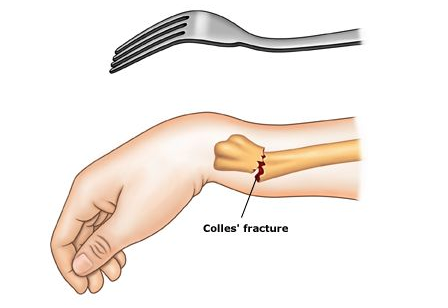
This is the typical shape of your wrist after a fracture which is called a dinner fork deformity. The diagram shows why it forms that shape.
What to do if you think you have broken your wrist?
Seek help from minor injuries or A&E
Do not use the affected arm
Give the arm support- make a sling from a scarf pass it under the arm and around the neck
An ice pack /bag of frozen peas wrapped in a tea towel can be applied to the wrist.
Take some painkillers paracetamol and or ibuprofen to control the pain and swelling.
Diagnosis and Treatment
Simple A/P and lateral Xrays are usually all that is needed to confirm the fracture diagnosis. Most Colles fractures do not require surgery. Traction can be applied to reduce the fracture and a splint or plaster cast may be applied, the cast may be split for a few days to allow the swelling to go down before a full cast is fitted. The cast goes from just below the elbow to below the fingers passing between the thumb and along the line of the metacarpal heads, allowing freedom of movement of the elbow and the thumb and fingers. The angle of the wrist is slightly upwards, flexed, and towards the little finger (ulnar deviation), thus holding the radius in a good position for healing.
The wrist will be immobilized for 5 to 6 weeks and it is important to keep it dry. During this time, you should keep your shoulder, elbow, fingers and thumb gently moving.
At rest you may be more comfortable if you support the arm on a pillow.
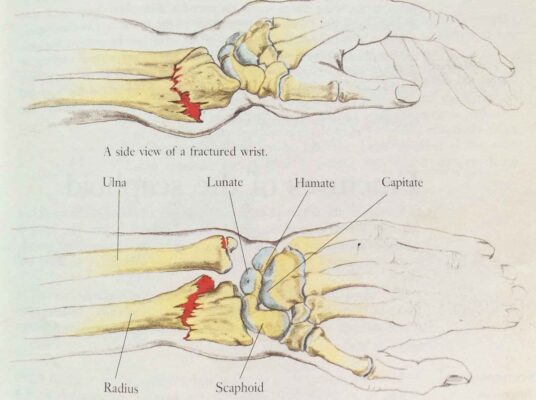
When to seek immediate medical attention
Any change in pain, altered sensation, skin colour, or redness and swelling which may be caused by an infection or the cast may be too tight or loose.
You should not drive, carry heavy objects or participate in sport whilst the cast is on.
After removal of the splint
When the cast comes off you will usually be given a removable wrist splint,
From here on the next phase of rehab begins.
Your wrist will feel stiff and weak and the muscle bulk of the forearm will have wasted.
It is important to work on regaining a full range of movement in all planes with especial attention being paid to ensuring a good grip.
Best results are achieved by exercising the wrist little and often with periods of rest in the splint, some pain and discomfort is to be expected during this phase of recovery. As movement and strength returns the time in the splint is reduced until you have weaned yourself off its use, this can be another 6 weeks.
You may not feel that you are fully recovered for up to 6 months following the initial injury but you should feel progress is being made steadily throughout this period.
Complications associated with this injury can include an ulnar styloid fracture
More serious complications that can arise with a more complex scenario include Intra articular involvement of the articular surfaces, which will require surgery via open reduction and internal fixation (ORIF), using wires, plate, screws or rods to realign the fracture.
Other complications can cause median nerve damage, post traumatic carpal tunnel syndrome, reflex sympathetic dystrophy, tear or rupture of the extensor pollicis longus tendon, and ligament damage.
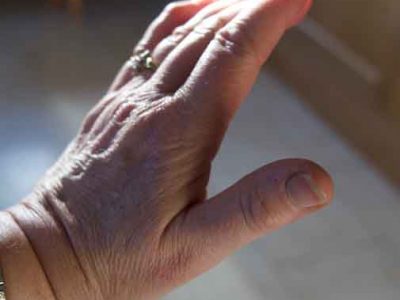
Wrist exercises- Early
1. With your forearm resting on the table palm down and hand over the edge- Bend your hand towards the floor and then back up towards the ceiling x 10
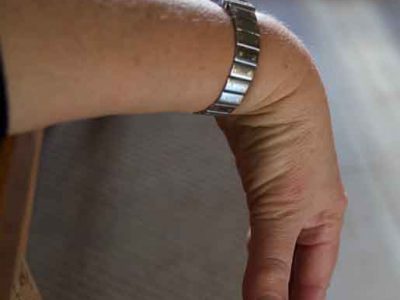
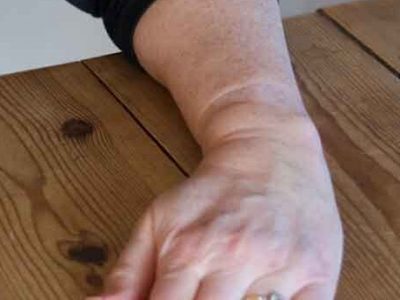
2. Rest the palm of your hand on the table and then slide your hand side to side x 10 each way
3. With your forearm rested on the table turn your whole forearm over from a palm down position to a palm up position and back keeping your elbow still x 10 each way
4. Try touching your thumb to the tip of each finger in turn and once able to try and do this quickly
5. Make a tight fist and then open it again spreading the fingers right out. Repeat x 20 and do whenever you have a moment as this will help reduce the swelling in your hand.
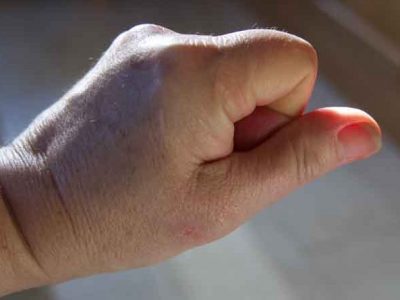
6. With the palm of your hand facing up move your thumb towards the base of the little finger across your palm. Then take it back out across as far as possible x 10
7. With the palm of your hand facing the ceiling stretch your thumb up towards the ceiling and back down x 10

8. When able hold a small weight and do exercise number one holding the weight
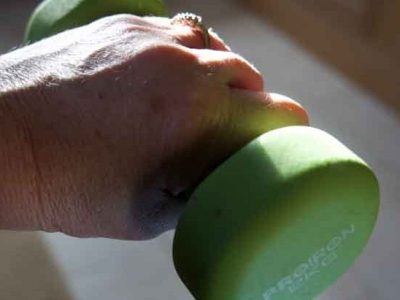
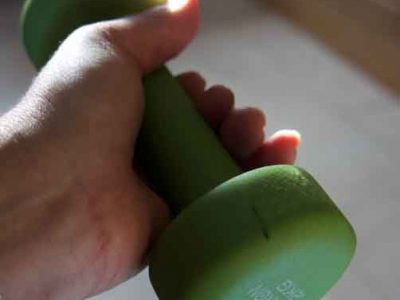
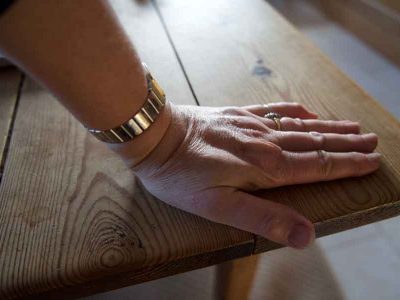
9. Standing- Put your hand on the table and push the forearm forwards x 10
10. Sitting place your hands together as if praying and then keeping them together rotate them up and down.
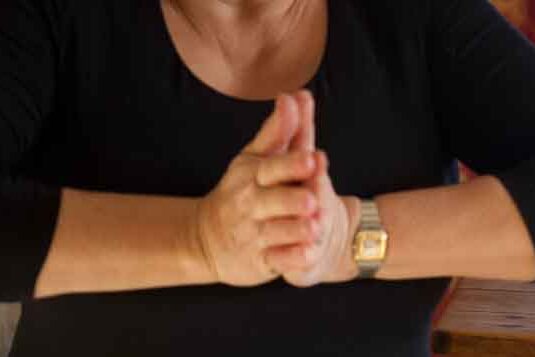


11. Hold a small ball and squeeze it to build up the strength in your grip
You can also use childrens playdoo or something similar.
